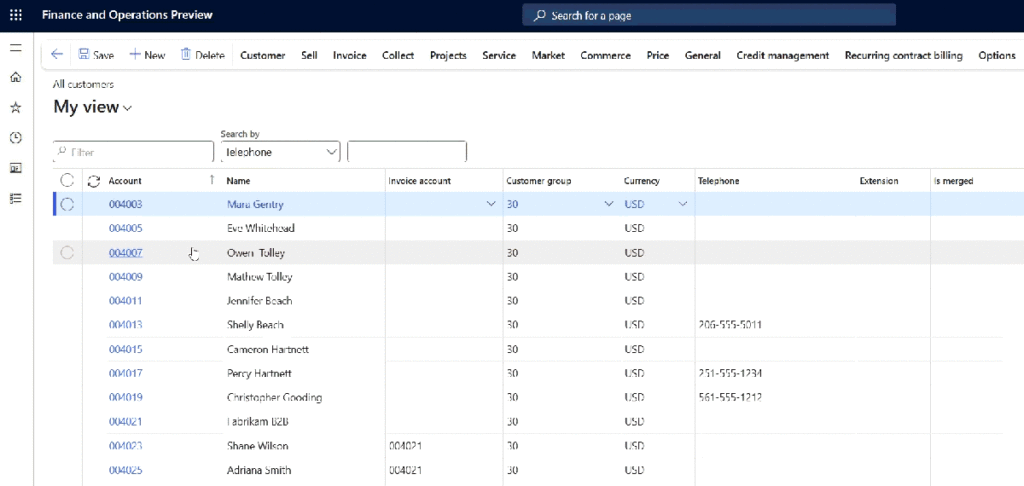Now Reading: When to Create a RunBaseBatch Batch Job
-
01
When to Create a RunBaseBatch Batch Job
When to Create a RunBaseBatch Batch Job

Last modified:
Leveraging the RunBaseBatch class in X++ for Dynamics 365 Finance and Operations, or F&O, can be incredibly useful for managing batch processing, particularly when you need processes to run in a single-threaded, controlled manner. Let’s review into the advantages and disadvantages:
Pros
First is simplicity. RunBaseBatch offers a straightforward, sequential processing framework to get work done. This setup simplifies debugging and understanding the flow of operations since everything runs on a single thread in a sequential order. Also, its easy to create a batch job using RunBaseBatch which can turn just about any class into a class that’s integrated with the batch framework.
Second is error handling. Managing errors in a single-threaded process is often just easier. Typically the batch job will stop at the first error it encounters that it can’t resolve or address and this error is caused by 1 record being processed so you can modify the parameters on the batch job to ignore that record until you have a chance to properly fix the issue ( or just process that record manually ).
Lastly is state management. RunBaseBatch simplifies state management by preserving state between runs – it will save the parameters you set on your batch job using Pack() and Unpack(). This is especially useful for tasks that need to continue from where they left off or we want to processing some data from state A to state B using a batch job.
Cons
The first con is performance: The primary drawback of any single-threaded model like RunBaseBatch is performance. Sequential processing can slow down operations, especially with large datasets or complex computations that would benefit from parallel processing. This means that if it takes 5 seconds to generate an invoice in batch, using a single threaded batch job, you can at most invoice 12 invoices every 1 minute ( or 720 every hour ).
The second con is scalability. As data processing needs increase, single-threaded batch processes might not scale efficiently. This can lead to long queues and slower processing times and potentially the item creating the data you want to process with a batch job creating more data faster than the batch job could ever process. Back to performance, if you need to process more than 720 invoices every hour, you need to speed up the invoicing process or make it multi-threaded.
Lastly is flexibility. While simplicity is an advantage, it can also be a limitation. The single-threaded nature of RunBaseBatch doesn’t support more complex, multi-threaded scenarios that could improve performance and reduce processing times. Other more advanced scenarios require more code with different interactions and design choices but RunBaseBatch is really easy to implement so it’s low barrier to batch entry is now a minor problem because that may be where some batch tasks start – and that shouldn’t be the case.
When deciding whether to use RunBaseBatch for your processing tasks, consider the nature of the task, data volume, performance requirements, and future scalability needs. As your needs grow, exploring other multi-threaded options might provide better performance and efficiency. You can think of this like the difference between a while select to delete a record or using delete_from to delete a set of record. The set operator is always going to be faster – just like all multi-threaded options will 99.9% of the time will also be faster.
Other Considerations
One way we can compare one batch job methodology to another is by measure the amount of time it takes to create the batch job and its tasks vs how long it takes to execute that batch job.
This is a chart of the amount of time it took to run the batch job for our simulated workload. You can find the code for this here.
Next, we have a chart that shows the amount of time it took to create the batch job. The chart is in milliseconds so they are all nearly identical. This tell us that with a standard RunBaseBatch style batch job, it takes very little time to create the batch job compared to the amount of time the batch job spends executing the batch job. This is important to keep in mind when reviewing alternatives.
Example Use Cases
Some examples of when to use a RunBaseBatch job are…
Data Cleanup: Delete old records based on user-specified criteria such as a query. Great fit if the volume of records to process is low and the amount of records being added by other processes is also low.
Periodic Reports: Generating and emailing reports on a schedule. If you have a monthly, daily, or weekly report that you need to generate and email where the only thing that changes in the date, this is another good candidate for a RunBaseBatch job.
Bulk Updates: Update records (e.g., prices or statuses) in bulk when you have a low number of records to update. This is likely to be row based updates which may take time but if designed as a batch job to run at night or only on a weekend, this could be a good fit.
Integration Tasks: Import/export data files from external systems. When handling a low volume of files in and/or out or where timeliness isn’t critical, a RunBaseBatch job may be a good fit. Just have to manage throughput.
Counter Example Use Cases
Here are some example when NOT to Use RunBaseBatch.
Complex Multi-Step Processes: If the job involves multiple dependent or unrelated tasks, consider using a Batch Bundled Job instead. RunBaseBatch jobs are good for simple one-and-done type tasks like delete a record, update a process, process a file. When you start adding multiple steps or dependencies, you invite errors and support tickets to track down where something went wrong.
Extremely Long-Running Jobs: For tasks that require extended time and might exceed transaction limits, consider alternatives like the SysOperation Framework. Just like multi-step processes, if you’re doing anything that may introduce other issues due to complexity, use something else to get the work done.
Conclusion
RunBaseBatch is an excellent choice for simple, single-threaded batch jobs that prioritize ease of implementation and error handling over performance and scalability. However, for high-volume or multi-threaded tasks, consider more advanced frameworks like the SysOperation Framework to meet performance demands. Think of it like the difference between a while select to delete records and a delete_from operation; while RunBaseBatch is simple and reliable, other methods are often faster and better suited for complex scenarios. Perhaps it’s time that RunBaseBatch no longer be the default choice when looking at a batch workload and we take a more nuanced approach to what we’re trying to acheive.
Original Post https://www.atomicax.com/article/when-create-runbasebatch-batch-job

















